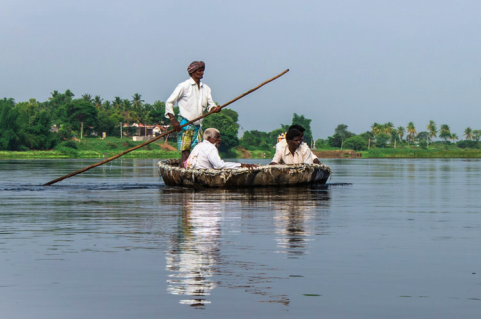 July 14, 2020, Oakland, California — Today the Pacific Institute released two case studies on setting site-level, contextual corporate water targets. While focused on river basins in India and South Africa, lessons learned from these case studies can be applied in other regions around the world.
July 14, 2020, Oakland, California — Today the Pacific Institute released two case studies on setting site-level, contextual corporate water targets. While focused on river basins in India and South Africa, lessons learned from these case studies can be applied in other regions around the world.
The world’s water resources are under increasing pressure from rising water consumption, pollution, and climate variability. The variety of water challenges companies face — from water governance issues to extreme events like drought — manifest in the river basins where companies operate. Therefore, setting meaningful targets requires companies to take the local context of their operations into consideration.
“Our South Africa case study documents the use of site-level water targets in two river basins: the Upper Vaal, which is critical for supplying water to South Africa’s economic hub, the Gauteng city-region; and the Berg and Breede river basins, which supply the City of Cape Town with water,” explains co-author Tien Shiao, Pacific Institute Senior Researcher. “For the India case study, we focused on steps taken and lessons learned in setting site-level water targets for apparel facilities in the Noyyal-Bhavani River Basin in South India, a significant hub for the textile industry.”
“Taking into consideration the unique situation of each river basin and aligning on important water challenges and the desired condition of the river basin are vital for setting effective site-level targets. With these case studies, we wanted to help participating companies understand the local water context and engage with peer companies, public sector water managers, and other stakeholders. We hope documenting this approach will help other companies prioritize actions and investments that address the key water challenges and contribute to sustainability in their regions.”
Key insights from the case studies include: collective action saves resources and creates scaled impact; good quality local data is needed to properly assess conditions and challenges; and understanding the root cause of water challenges and the level of ambition at a site is important in order to identify effective site-level water targets. Additionally, climate change and governance structures are overarching issues that touch on every water challenge, and it’s important to recognize that they will impact all water challenges.
Setting Site Water Targets Informed by Catchment Context: Upper Vaal River Basin and Berg and Breede River Basins, South Africa was developed by the UN Global Compact’s CEO Water Mandate, which the Pacific Institute serves as Co-Secretariat for, in collaboration with Sasol Limited, Unilever PLC, Woolworths Holdings Limited, and Hilton Worldwide Holdings Inc.
Setting Site Water Targets Informed by Catchment Context: Noyyal-Bhavani River Basin, South India was developed by the CEO Water Mandate in collaboration with the Ashoka Trust for Research in Ecology and the Environment, the Sustainable Apparel Coalition, and Anthesis Group. The apparel companies Levi Strauss & Co., Gap Inc., and PVH Corp., which have operations in the Noyyal-Bhavani River Basin, participated in the pilot study.
The CEO Water Mandate is a UN Global Compact initiative that mobilizes business leaders on water, sanitation, and the Sustainable Development Goals.

